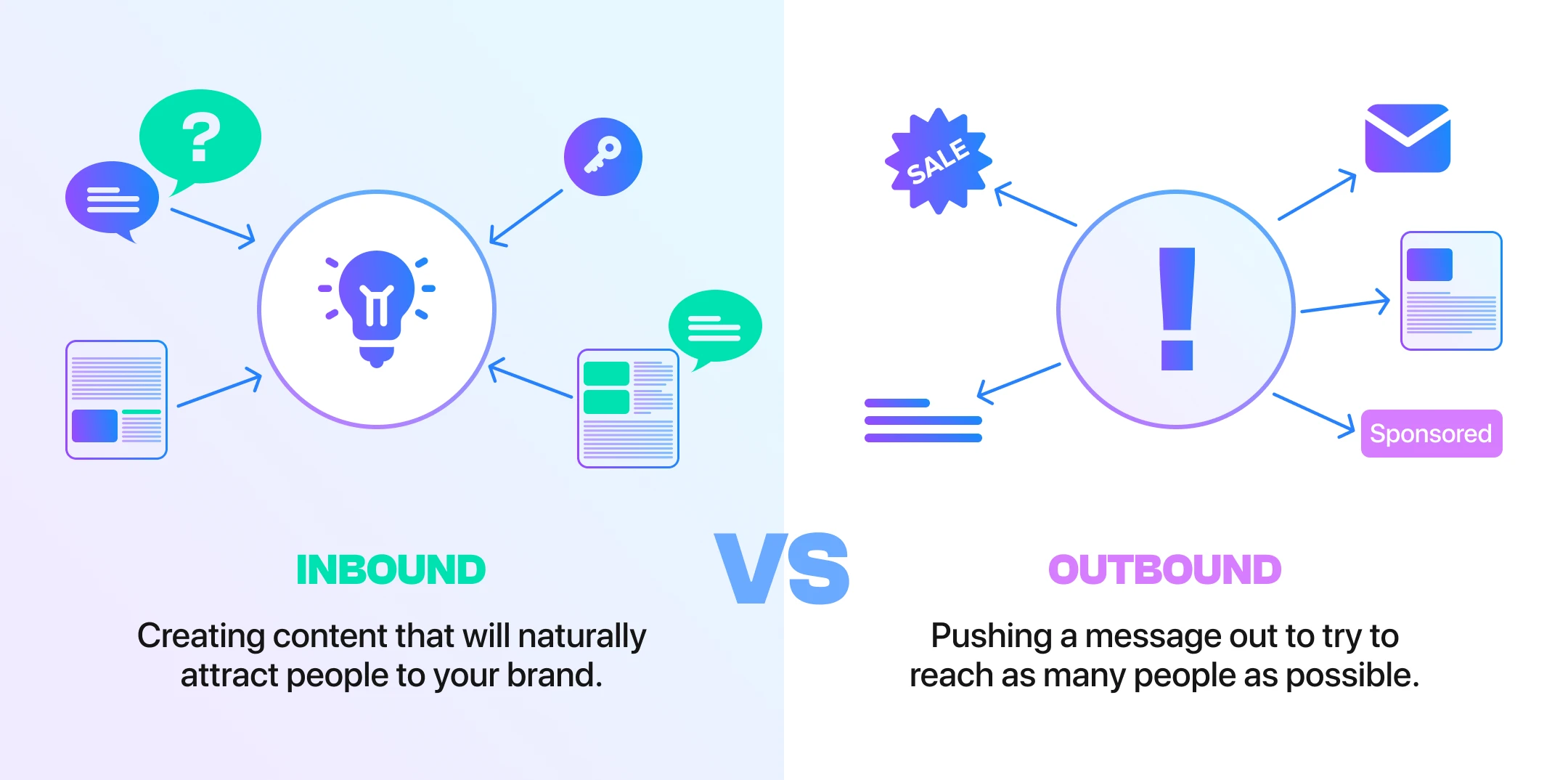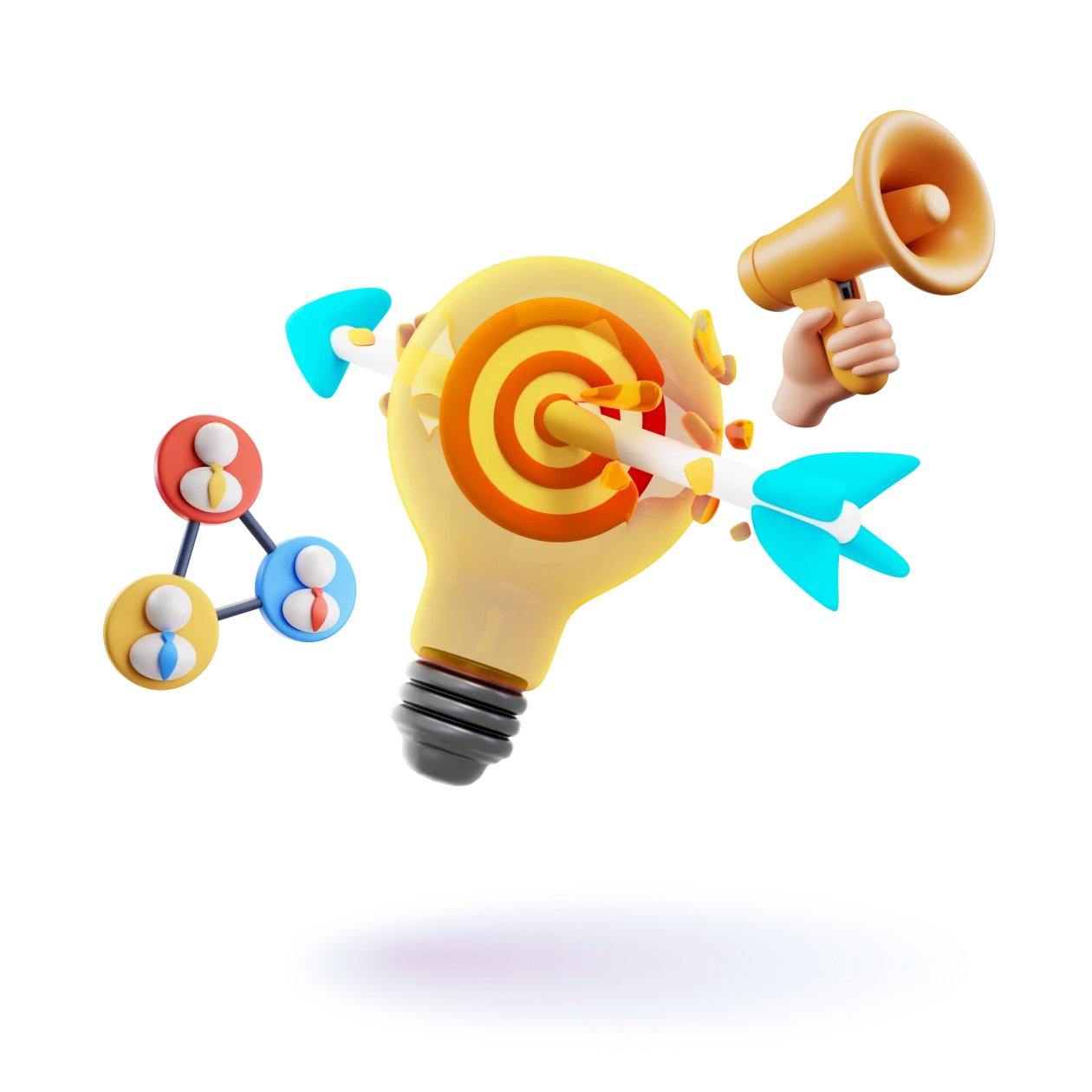During a strategy session, a client once asked, “Are we doing something wrong with inbound?” Their pipeline was quiet despite steady traffic. Just weeks earlier, another client had asked the opposite—why their cold emails weren’t landing. These moments are common in lead generation. The truth? Most aren’t choosing the wrong method. They’re only using half the strategy.
This article breaks down inbound vs outbound lead generation, not to choose one over the other, but to show how timing and strategy make all the difference.
What Is Inbound Lead Generation?
A SaaS company we worked with had everything in place: sharp branding, a well-designed site, and a steady content schedule. SEO started to kick in, organic traffic doubled, even tripled—but leads? Still barely trickling in. What changed things wasn’t more blog posts or ad spend. It added structure, such as lead scoring, gated content, and email automation. They didn’t just publish content; they built a journey. The result? A 3x increase in qualified leads in under two months.
Let’s stop treating inbound and outbound lead generation as rivals—it’s not a battle; it’s a balance.
So, what exactly is inbound lead generation, and why is it a foundational strategy for businesses building long-term growth?
Inbound lead generation attracts potential customers to your business by offering helpful, relevant, and value-packed content. Instead of reaching out to people directly, you create reasons for them to come to you. Think: blog articles, case studies, SEO, free tools, whitepapers, and educational videos. These aren’t just marketing assets—they’re magnets.
At its core, inbound is a pull strategy. It works by building visibility and trust. Prospects discover your brand when they’re searching for answers or exploring solutions. And when your content shows up at the right time, you’re suddenly part of their decision-making process.
Inbound lead generation works best when it’s intentional—when you guide your audience through a clear, content-driven journey. It’s not about publishing for the sake of publishing. It’s about understanding your ideal customer’s pain points, creating content that speaks to them, and then turning that awareness into action.
And yes, it’s efficient: Inbound leads cost less than outbound leads. But they don’t come for free. You’ve got to earn attention, then guide it. One of our experts says, “Inbound works best when structured. Blogs alone don’t convert—what matters is how you turn awareness into a guided journey.”
Without that structure, you’re just writing into the void.
What Is Outbound Lead Generation?
A cybersecurity firm came to us with one goal: break into enterprise accounts fast. They had a great product but no market awareness. We built a cold outreach campaign targeting CISOs at mid-to-large organizations. Precise ICP? Check. Messaging tailored to pain points? Double check. Within 45 days, they booked 30 meetings. Not bad for a company with no brand recognition in that space.
That’s the essence of outbound lead generation—you start the conversation, you control the targeting.
Outbound lead generation is a push strategy. You’re not waiting to be found—you make the first move. Whether it’s cold email, cold calling, LinkedIn DMs, or targeted paid ads, the goal is to start conversations with prospects who match your ideal customer profile.
You’re not casting a wide net. You’re choosing who to speak to, when, and how. When done right, outbound marketing works fast. But it’s also demanding. You need clean data, clear messaging, and constant testing. Outbound marketing doesn’t forgive sloppy targeting or lazy copy.
The upside? It puts you in control of your pipeline. You don’t have to wait for someone to Google you or stumble onto your blog. You show up first.
And when it’s personalized, it works even better: Personalized outbound campaigns see a 32% higher reply rate.
As one of our SalesAR experts says, “Outbound is high-impact but high-risk. If you miss the mark on relevance, it backfires. If you nail it, it scales fast.”
You’re paying for speed and access. Just make sure your aim is sharp.
If your leads aren’t responding, don’t rush to blame your email list or sender identity. Start by refining your messaging.
Inbound vs. Outbound: Core Differences

Let’s break this down. Inbound and outbound aren’t opposites—they’re just different tools for different jobs. Think of them more like strategy levers. When combined, inbound and outbound lead generation create a powerful, scalable system that drives both short-term results and long-term growth. But side by side, their differences are sharp.
Here’s a quick tip:
The buyer
The seller
Slower start, compounding over time
Fast results, short cycles
Lower over time
Higher up front
Limited to those who engage
Full control via segmentation
How do you know when to use which?
Inbound lead generation is ideal for building long-term brand equity and nurturing high-intent prospects seeking solutions. Your blog from a year ago could still be pulling in leads.
Outbound, on the other hand, gets the ball rolling. It’s proactive. It gets you in front of people who haven’t heard of you, but should.
Inbound builds trust; outbound builds momentum. One’s a magnet. The other’s a spear.
And here’s where it gets interesting: 80% of B2B leads from social media come from LinkedIn, a channel often dominated by outbound strategies.
Benefits of Outbound Lead Generation
Outbound gets a bad rap for being “interruptive,” but it’s one of the most effective ways to drive revenue quickly. Here’s what makes outbound worth the investment:
1. Speed to Pipeline
You don’t have to wait months for SEO or content to rank. Outbound can deliver meetings in days, not quarters. For startups or companies entering new markets, that speed is critical.
2. Full Targeting Control
You choose who to contact—by title, industry, company size, tech stack, or buying signals. No guessing if the right people are seeing your content. You reach them directly.
3. Scalable Testing
Outbound gives immediate feedback. A/B test subject lines, angles, and CTAs, and double down on what works. It’s like having a live lab for your messaging.
4. Opens New Markets
Need to expand to a new vertical or region? Outbound lets you tap into those segments without waiting for organic reach. You can go where inbound hasn’t landed yet.
5. Proactive Positioning
Instead of waiting for someone to search for what you offer, you shape the narrative. Introduce a new solution, reframe a problem, or stand out from bigger players—all on your terms.
Outbound lead generation gives you the wheel—it’s about taking control and reaching the right people, fast. Just be ready to steer with precision.
When to Use What (And How to Think About Timing)
It’s not about which is better, but when to pull which lever.
Take an early-stage startup we worked with. They had no clue what messaging would resonate with their target buyers. So, we launched a focused outbound campaign to test positioning and pain points with decision-makers directly. Within weeks, patterns emerged. That feedback? Gold. It fed into their content strategy, making their inbound 10x more effective when launched.
Here’s a simple breakdown:
- You’re educating a market that’s not solution-aware
- You want to build brand authority over time
- Your sales cycle is long, and prospects need multiple touchpoints
- You’re looking for cost-efficient lead gen at scale over time
- You’re validating a new ICP or testing a new market
- You need meetings now, not next quarter
- You’re targeting specific buyers (CFOs, CISOs, CTOs)
- You want to learn quickly what resonates and what doesn’t
Here’s how we see it at SalesAR: “Start outbound when time is critical. Layer in inbound when momentum builds. Don’t silo—sequence.”
Outbound lead generation opens the door. Inbound keeps people walking through it—timing them right is the secret to a smooth funnel.
At SalesAR, we specialize in fast, laser-focused outbound lead generation that connects you with decision-makers ready to talk. Our team builds custom ICP profiles and crafts personalized messaging for every campaign. It also runs A/B tests to find what converts.
We don’t just send emails—we build systems. Everything we do, from manual lead research and multichannel outreach to performance analytics and strategic adjustments, is built to scale with you. While other agencies discuss personalization, we bake it into every step, so your outreach never feels cold.
Final Thoughts
The most successful campaigns don’t favor one method—they synchronize both. Inbound lead generation nurtures trust; outbound drives action. Together, they fuel growth. One builds the brand, and the other builds the pipeline. But things take off when they align—when your cold outreach is backed by valuable content and your blog traffic is followed up with personal outreach.
This isn’t theory. We see it daily in SaaS, AI, logistics, and beyond. The businesses growing the fastest aren’t choosing sides—they’re building systems that connect the dots.
If you’re ready to stop guessing and start scaling with clarity—let’s build your lead generation system right.
No cold outreach, no stress. Just sales-ready calls with decision-makers.

